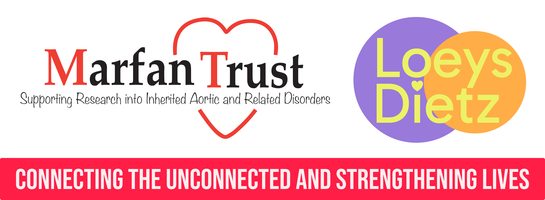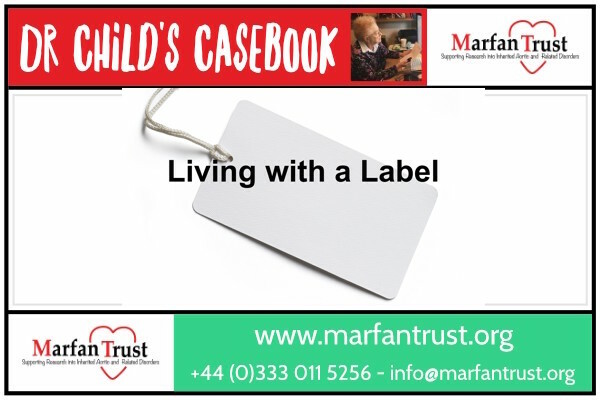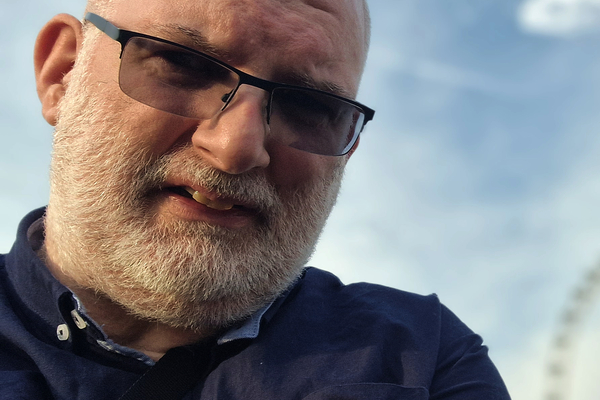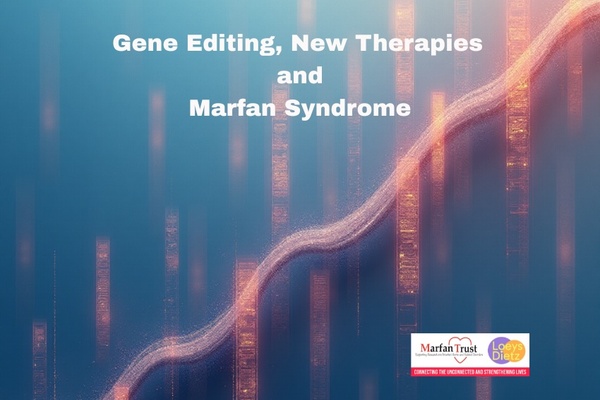Labels helpfully classify, bringing clarity to chaos and reducing complexity to simplicity. They can make sense of a disparate set of medical symptoms, bundling them under one name. But what is in a name? Connective tissue disorders are all related, overlapping and mimicking each other. People sometimes find themselves misdiagnosed with one and then re-diagnosed with another. Does this re-diagnosis make any real, practical difference or is it just a label?
Q: I’ve lived for the last thirty or so years thinking I had Marfan syndrome. During my last genetics appointment I was told that I don’t in fact have Marfan syndrome, but may have Loeys-Dietz syndrome (LDS). Do you support people with LDS? Do you have any information on LDS? And finally, what difference does this new diagnosis make If any?
A: It is just a label. Marfan syndrome was described well before Loeys-Dietz syndrome and people were sometimes misdiagnosed with Marfan, then subsequently found to have LDS once it became known. However, in the meantime, your symptoms have long been controlled by treatment so it makes little practical difference as to whether these symptoms are a result of MFS or LDS. Knowing the correct diagnosis depends on finding a gene mutation. LDS can present earlier than MFS and your doctors do need to know the cause in order to choose the best treatment. Also, your children can be screened as there is a 50:50 chance they have inherited LDS.
We are expanding our support to encompass Loeys-Dietz patients. We are shortly publishing a booklet on LDS and an information sheet has been prepared, the contents of which are presented below.
INFORMATION SHEET
Loeys-Dietz Syndrome is a rare genetic connective tissue disorder that shares some features with Marfan Syndrome. Like Marfan Syndrome, people with Loeys-Dietz syndrome can have changes affecting their heart, bones, joints, skin, eyes, blood vessels and internal organs. We would like to raise awareness of Loeys-Dietz Syndrome, to allow more people with this syndrome to gain a diagnosis and appropriate management of the condition.
Many individuals with Loeys-Dietz Syndrome are the first in their family to have the condition, and therefore it is likely to be underdiagnosed in the population.
There are four main characteristics often seen together in Loeys-Dietz syndrome, that are not typically seen together in other connective tissue disorders such as Marfan Syndrome. These are:
1. Aneurysms – an aneurysm is a widening or dilation of an artery. This is most often seen in the aortic root- where your aorta (the large blood vessel that carries blood from the heart to the rest of the body) meets the heart.
2. Arterial tortuosity- twisting or spiralling arteries.
3. Hypertelorism - widely spaced eyes
4. Bifid (split) or broad uvula - the uvula is the small piece of flesh that hangs down from the back of the mouth
However, not all patients with the syndrome will have all four of these characteristics, and people with the condition can have a wide range of symptoms. More information on these can be found here
Based upon the success of our Marfan Syndrome support group, we would like to create a support group for patients either diagnosed with Loeys-Dietz syndrome, or those who suspect they might have the condition. This group would allow people to reach out with any questions they might have regarding their condition, or to seek assistance with getting a diagnosis. We are also aiming to create patient webinars for our support group, to allow patients to speak to experts about Loeys-Dietz syndrome.









